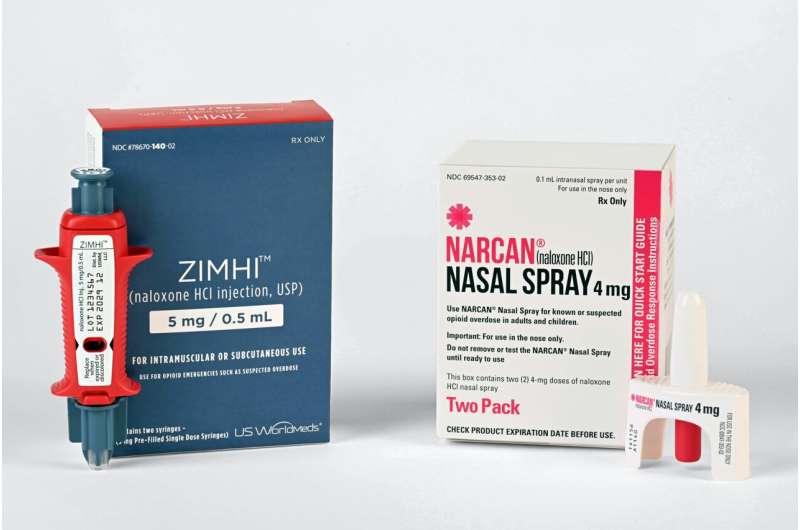This article has been reviewed according to Science X's editorial process and policies. Editors have highlighted the following attributes while ensuring the content's credibility:
fact-checked
trusted source
proofread
Researchers identify an economic solution to Canada's opioid crisis

Nasal-administered naloxone is more cost-effective and could help reduce the number of opioid-related fatalities compared to the current publicly funded intermuscular version, a new study has found. The study, "An economic evaluation of community pharmacy dispensed naloxone in Canada," was published in the Canadian Pharmacists Journal.
Since 2016, Canada's opioid crisis has worsened, with over 40,000 opioid-related deaths, or about 22 deaths per day. Most of these accidental deaths (88%) occur in British Columbia, Alberta and Ontario.
An effective way to help prevent opioid-related deaths is through community pharmacy-based naloxone programs. Currently, intramuscular naloxone is publicly funded across Canada, but it can be stress-inducing and difficult for bystanders to administer naloxone through a syringe. Intranasal naloxone, used as a simple nasal spray, is only publicly funded in Ontario, Quebec and the Northwest Territories.
The study by University of Waterloo researchers found a research gap in identifying the cost-effectiveness of implementing intranasal naloxone distribution across Canada through public funding. Mathematical modeling conducted by Waterloo researchers confirmed that intranasal naloxone is cost-effective when distributed to all Canadians and could help save additional lives. Based on the model, 151 deaths will be prevented per 10,000 people.
"Think of an EpiPen," said Ashley Cid, a Ph.D. candidate in Waterloo's School of Pharmacy, which offers North America's most innovative pharmacy curriculum by integrating biomedical and pharmacy science with clinical, behavioral and social sciences that emphasizes patient-focused care.
"Similarly, naloxone is effective, safe, easy to use and is a medication meant to save someone's life regardless of whether you take opioid medication for a prescription or not. Providing publicly funded intranasal naloxone kits can effectively manage and reduce opioid-related fatalities due to increased distribution."
Cid adds that naloxone is a harm-reduction measure and does not increase the risk of opioid use. She believes policymakers should consider publicly funding intranasal naloxone across Canada and increasing distribution as it would help to mitigate the immediate public health opioid crisis and save more lives, especially in provinces like Alberta and British Columbia, where high rates of deaths are occurring.
"Providing intranasal naloxone through community pharmacies would have an immediate impact and be a great solution to increase access to publicly funded naloxone kits," Cid said. "I hope someday naloxone will be kept in first aid kits in your car, purse or home for emergencies."
More information: Ashley Cid et al, An economic evaluation of community pharmacy–dispensed naloxone in Canada, Canadian Pharmacists Journal / Revue des Pharmaciens du Canada (2024). DOI: 10.1177/17151635241228241


















